This week we have added many new and exciting pieces of antique English Country House Furniture to our London showroom. At Jamb I follow the holy grail for untouched eighteenth and nineteenth century Country house furniture and I am constantly in search for treasures in their original and unfettered condition. There is an ultimate pleasure in buying something that is centuries old, that is unrestored, still functions and will do so for another hundred years.
Untouched Antique English Country House Furniture.
20 November 2015
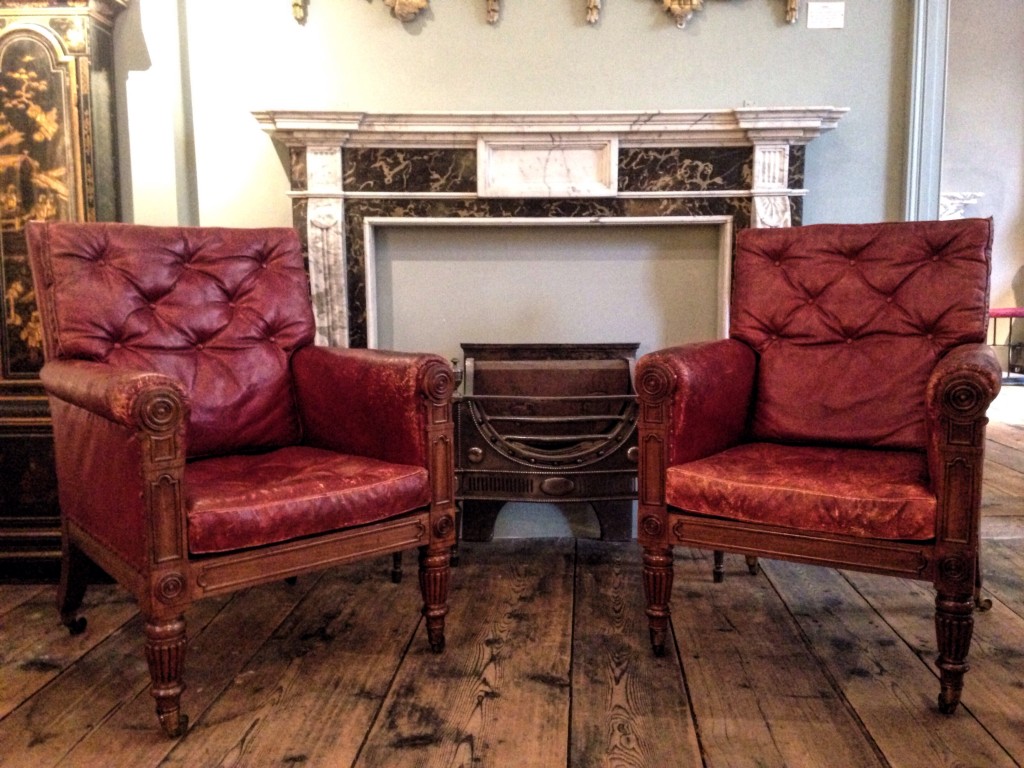
A pair of Late Regency Bergere Chairs.
This pair of deep red Morocco hide chairs in their original upholstery are absolute near perfection.

I am extremely excited to have bought this exceptional pair of late Regency library chairs. The craftsmanship is divine, executed in mahogany with striking decoration derived from the classical world. Bullseye roundels, reeded tapered legs and brass cappings and casters create a strength of design.
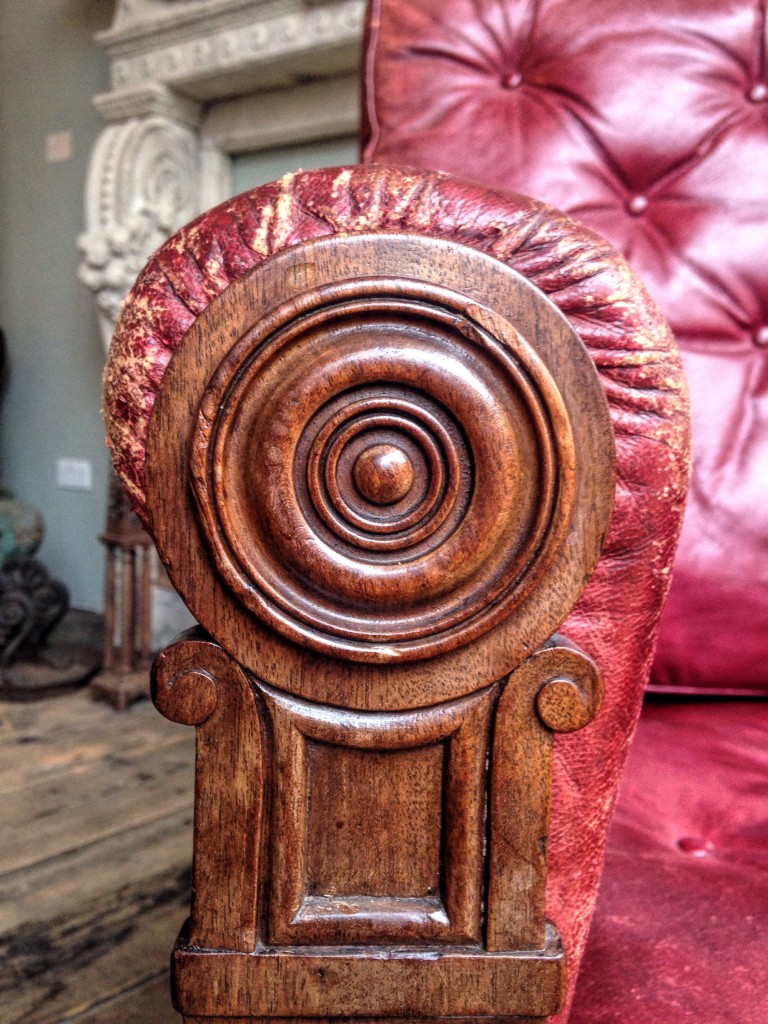
The detail shot of the Bullseye roundels of the Library Chair.
Strong, square and masculine in form, the chairs are extremely comfortable. The fact they remain intact from the early nineteenth century is an absolutely enormous feat – and I say that with embittered personal experience. When I was twenty I bought my most prized possession. A deep red Morocco leather chair. As if in a dream, when I took the covers off, the absolutely perfect original morocco upholstery was revealed. I was living in a place at the time where there were two Siamese cats and they got into my room and in a space of a few hours completely clawed and desecrated my beloved chair.
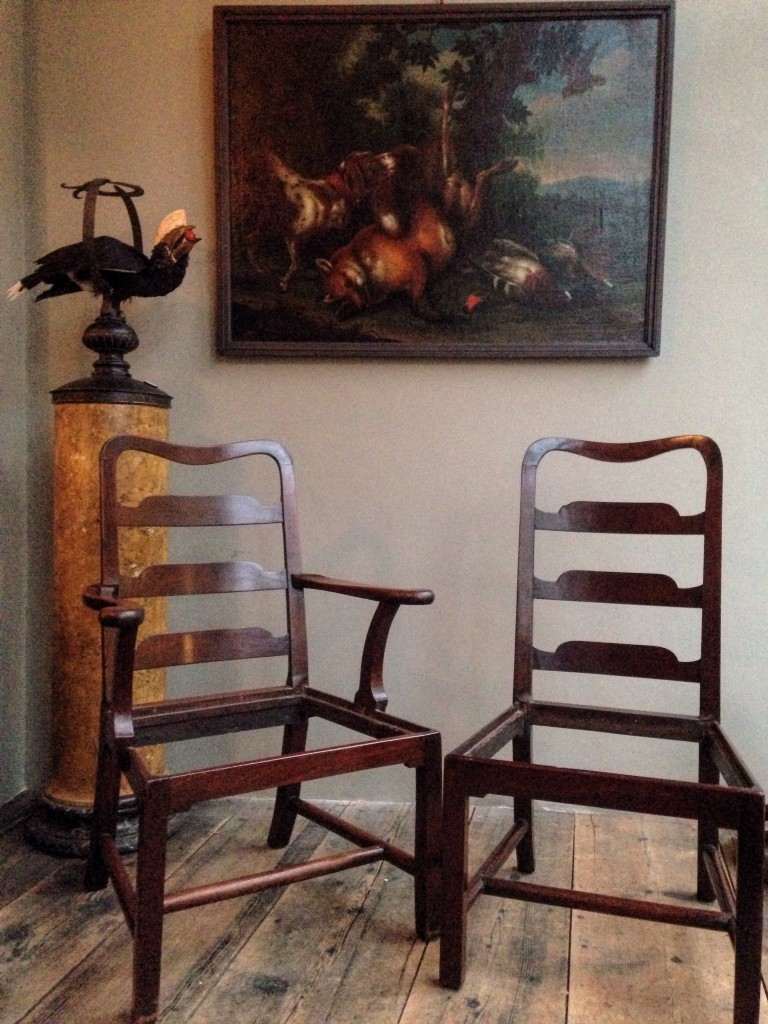
Two from a set of eight Irish mid eighteenth century dining room chairs.
There are eight in this set of Irish mid eighteenth century dining room chairs. Two are seen here with their vernacular ladder backs – the quintessential Irish design. The chamfered detail enhances the outline to give them a very clear and crisp appearance. Simple and honest, but utterly chic and extremely beautiful and tactile. A relatively long set including two arm chairs with a generous, grown up country house scale.
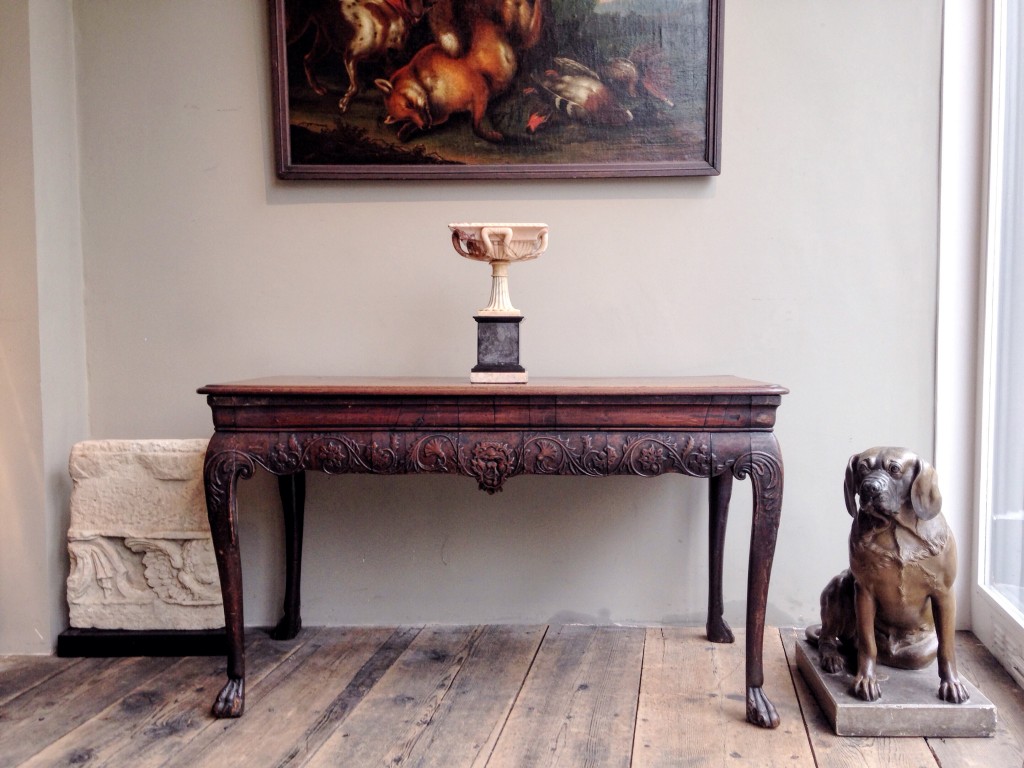
This Irish side table, (mid eighteenth century) is really quite unusual because it is walnut and is absolutely untouched. As my mentor Warner Dailey would say, it has a dry surface. It is remarkably rare because most side tables of this period were mahogany. It has the most fabulous yet naive carving.
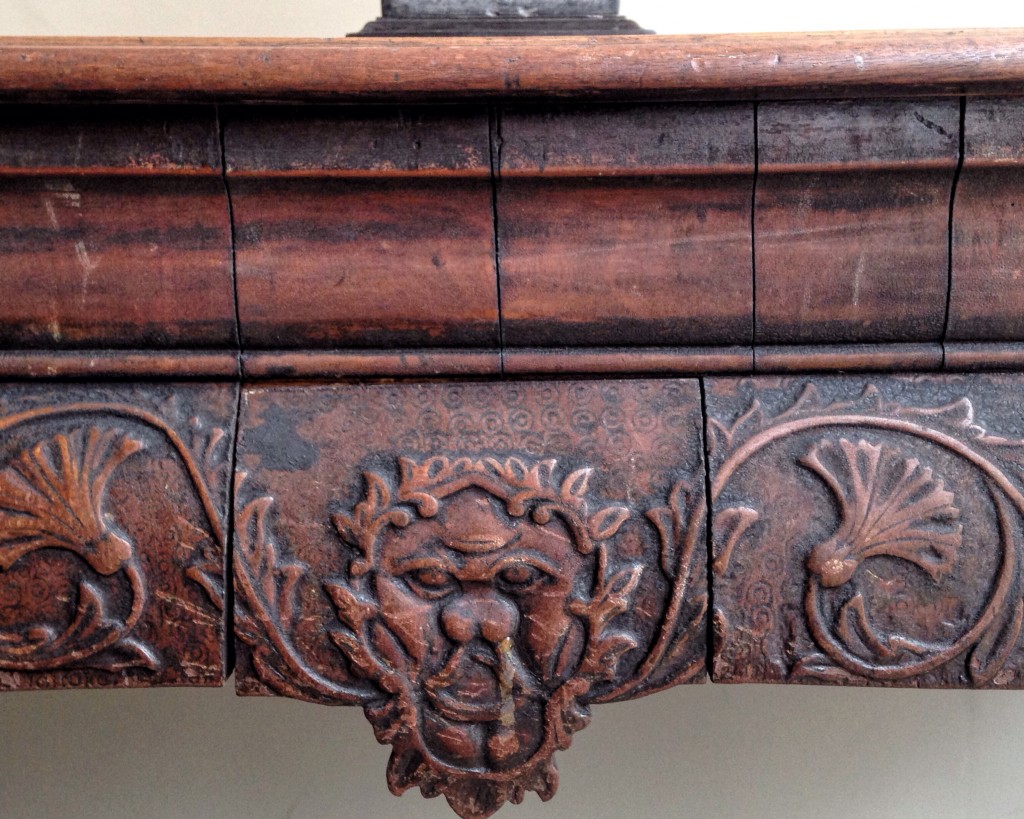
At the centre is a grotesque head with carved Acanthus scrolls either side. Acanthus carving continues again on the cabriole legs terminating in Paw Feet.
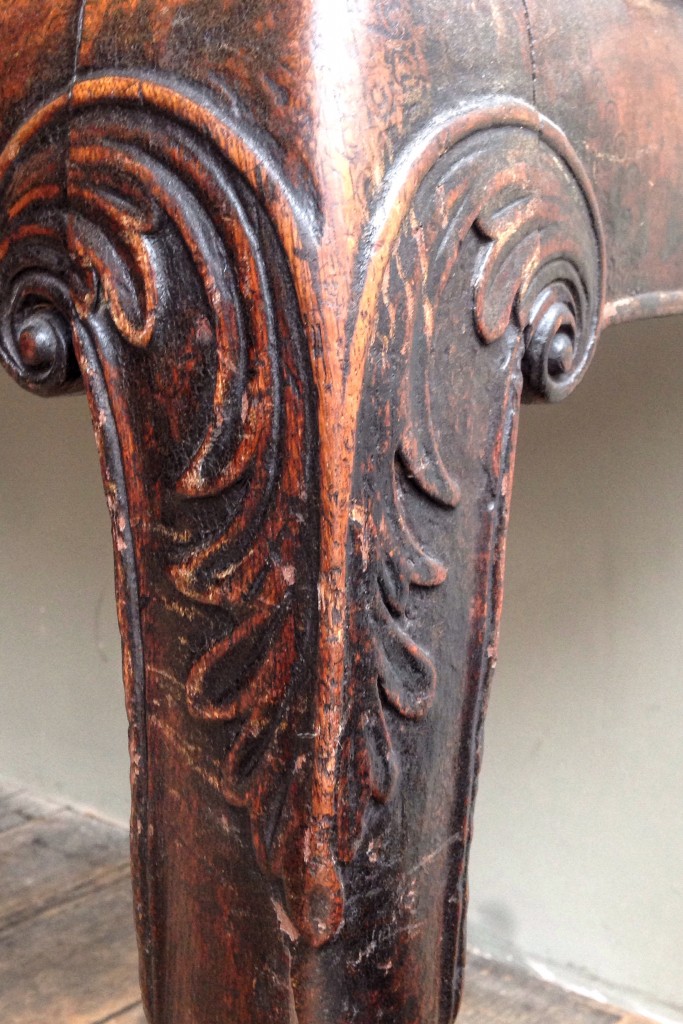

An Arts and Craft Table with nineteenth century Ceylonese cane chairs
Traditional craftsmanship in its simplest form in the form of an Oak Cotswolds school Arts and Craft Table. Arranged around the table are ten early nineteenth century Ceylonese ebony chairs with fine cane seats.
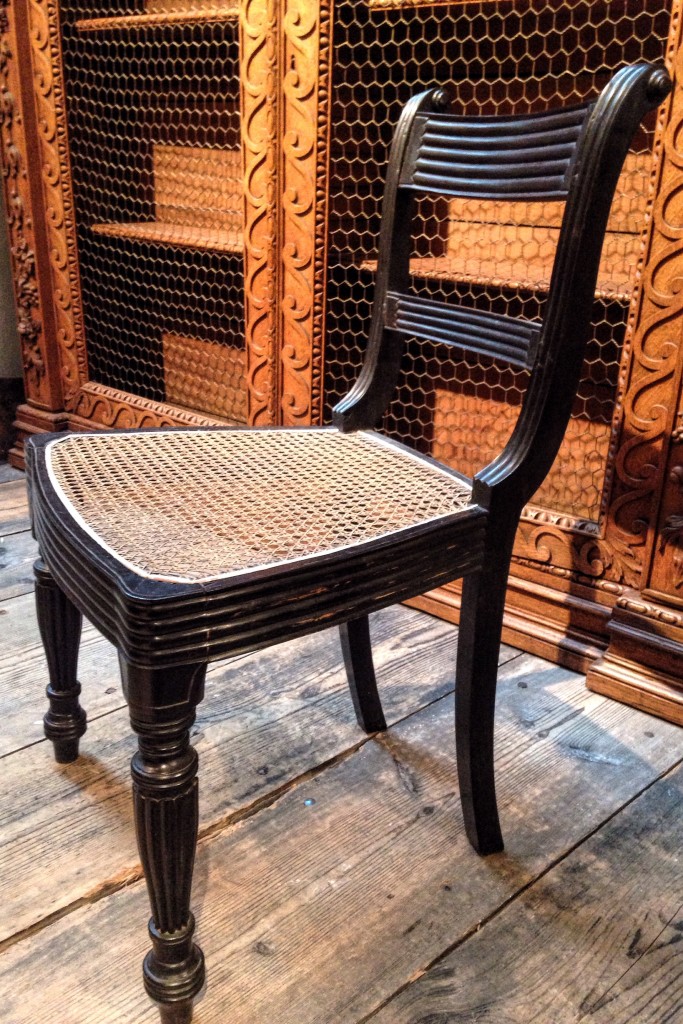
Early nineteenth Ceylonese chairs with fine cane seats.
This early nineteenth century Ceylonese dining chair with cane seats is one of ten. Again, untouched, in their original condition.They are solid pieces of wood. There is a beautiful balance between the extraordinary weight of the ebony and the intricate fine cane seats. As soon as the British and Europeans set foot in Ceylon in the early nineteenth century, the skill of the Ceylonese craftsmen and furniture makers was noted and utilised. The island of Ceylon had long been celebrated for the ubiquity and quality of the range of timbers it grew and soon copies of English furniture were made for the colonial market – some of the finest of that period.



